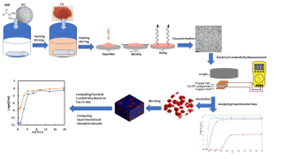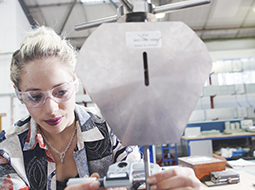-
Study
-
Quick Links
- Open Days & Events
- Real-World Learning
- Unlock Your Potential
- Tuition Fees, Funding & Scholarships
- Real World Learning
-
Undergraduate
- Application Guides
- UCAS Exhibitions
- Extended Degrees
- School & College Outreach
- Information for Parents
-
Postgraduate
- Application Guide
- Postgraduate Research Degrees
- Flexible Learning
- Change Direction
- Register your Interest
-
Student Life
- Students' Union
- The Hub - Student Blog
- Accommodation
- Northumbria Sport
- Support for Students
-
Learning Experience
- Real-World Learning
- Research-enriched learning
- Graduate Futures
- The Business Clinic
- Study Abroad
-
-
International
International
Northumbria’s global footprint touches every continent across the world, through our global partnerships across 17 institutions in 10 countries, to our 277,000 strong alumni community and 150 recruitment partners – we prepare our students for the challenges of tomorrow. Discover more about how to join Northumbria’s global family or our partnerships.
View our Global Footprint-
Quick Links
- Course Search
- Undergraduate Study
- Postgraduate Study
- Information for Parents
- London Campus
- Northumbria Pathway
- Cost of Living
- Sign up for Information
-
International Students
- Information for International Students
- Northumbria and your Country
- International Events
- Application Guide
- Entry Requirements and Education Country Agents
- Global Offices and Regional Teams
- English Requirements
- English Language Centre
- International student support
- Cost of Living
-
International Fees and Funding
- International Undergraduate Fees
- International Undergraduate Funding
- International Masters Fees
- International Masters Funding
- International Postgraduate Research Fees
- International Postgraduate Research Funding
- Useful Financial Information
-
International Partners
- Agent and Representatives Network
- Global Partnerships
- Global Community
-
International Mobility
- Study Abroad
- Information for Incoming Exchange Students
-
-
Business
Business
The world is changing faster than ever before. The future is there to be won by organisations who find ways to turn today's possibilities into tomorrows competitive edge. In a connected world, collaboration can be the key to success.
More on our Business Services-
Business Quick Links
- Contact Us
- Business Events
- Research and Consultancy
- Education and Training
- Workforce Development Courses
- Join our mailing list
-
Education and Training
- Higher and Degree Apprenticeships
- Continuing Professional Development
- Apprenticeship Fees & Funding
- Apprenticeship FAQs
- How to Develop an Apprentice
- Apprenticeship Vacancies
- Enquire Now
-
Research and Consultancy
- Space
- Energy
- AI and Tech
- CHASE: Centre for Health and Social Equity
- NESST
-
-
Research
Research
Northumbria is a research-rich, business-focused, professional university with a global reputation for academic quality. We conduct ground-breaking research that is responsive to the science & technology, health & well being, economic and social and arts & cultural needs for the communities
Discover more about our Research-
Quick Links
- Research Peaks of Excellence
- Academic Departments
- Research Staff
- Postgraduate Research Studentships
- Research Events
-
Research at Northumbria
- Interdisciplinary Research Themes
- Research Impact
- REF
- Partners and Collaborators
-
Support for Researchers
- Research and Innovation Services Staff
- Researcher Development and Training
- Ethics, Integrity, and Trusted Research
- University Library
- Vice Chancellors Fellows
-
Research Degrees
- Postgraduate Research Overview
- Doctoral Training Partnerships and Centres
- Academic Departments
-
Research Culture
- Research Culture
- Research Culture Action Plan
- Concordats and Commitments
-
-
About Us
-
About Northumbria
- Our Strategy
- Our Staff
- Our Schools
- Place and Partnerships
- Leadership & Governance
- University Services
- Northumbria History
- Contact us
- Online Shop
-
-
Alumni
Alumni
Northumbria University is renowned for the calibre of its business-ready graduates. Our alumni network has over 253,000 graduates based in 178 countries worldwide in a range of sectors, our alumni are making a real impact on the world.
Our Alumni - Work For Us
Development of Multifunctional Antimicrobial Flexible Sensor
 Nosocomial
infections are the most prevalent adverse event in healthcare settings
worldwide. Generally, polymers used in textiles (such as nylon and polyester)
have the potential to propagate microorganisms since the three key conditions
for microorganism development, namely moisture, nutrients, and temperature, are
concurrently present in polymers in contact with human skin. One of the most
effective approaches to prevent the proliferation of resistant bacterial
strains is the use of durable antibacterial textiles in hospitals. Metal-based
nanoparticles (MNPs) have a higher surface area with greater leaching speed
than larger particles. Therefore, polymers containing MNPs are currently
considered attractive candidates to release higher concentrations of metal ions
with a more potent antimicrobial effect. This polymer composite can produce a
response to physical and chemical stimuli such as a change in heat, electrical
current, temperature, moisture and force. Furthermore, certain polymers are
naturally flexible that can accommodate the body's motions. This mean that this
polymer composite in the cloth would ultimately be used as wearable sensors.
Nosocomial
infections are the most prevalent adverse event in healthcare settings
worldwide. Generally, polymers used in textiles (such as nylon and polyester)
have the potential to propagate microorganisms since the three key conditions
for microorganism development, namely moisture, nutrients, and temperature, are
concurrently present in polymers in contact with human skin. One of the most
effective approaches to prevent the proliferation of resistant bacterial
strains is the use of durable antibacterial textiles in hospitals. Metal-based
nanoparticles (MNPs) have a higher surface area with greater leaching speed
than larger particles. Therefore, polymers containing MNPs are currently
considered attractive candidates to release higher concentrations of metal ions
with a more potent antimicrobial effect. This polymer composite can produce a
response to physical and chemical stimuli such as a change in heat, electrical
current, temperature, moisture and force. Furthermore, certain polymers are
naturally flexible that can accommodate the body's motions. This mean that this
polymer composite in the cloth would ultimately be used as wearable sensors.
In this context, this project aims to develop a novel antimicrobial flexible conductive wearable sensor. The sensor will be prepared by dispersing bimetallic nanoparticles/nanowires on the polymer matrix using different approaches: melt compounding, in situ polymerisation, and solution mixing. Subsequently, the sensor's antibacterial and electrical properties, such as conductivity, will be investigated simultaneously to achieve a good combination of antibacterial behaviour and conductivity. Studies that examine these features together are unique. Furthermore, in this study, a new theoretical model capable of predicting antibacterial properties based on conductivity data will be developed. This project will allow the design of antibacterial sensors with favourable electrical properties for potential medical applications.
Faculty: Engineering and Environment
Department: Mechanical and Construction Engineering
Principal Supervisor: Dr Yolanda Sanchez Vicente
Recent publications by supervisors relevant to this project
Conductivity Behaviour under Pressure of Copper Micro-Additive/Polyurethane Composites (Experiment and Modelling) Saeid Mehvari, Yolanda Sanchez-Vicente, Sergio González and Khalid Lafdi, Polymers 2022, 14(7), 1287. https://doi.org/10.3390/polym14071287
Eligibility and How to Apply
Qualification
Applications are invited from exceptional candidates who have a good first or upper second class degree (or equivalent) in engineering or materials science. Students who are not UK/EU residents are eligible to apply, provided they hold the relevant academic qualifications, together with an IELTS score of at least 6.5. This project is well suited to motivated and hard-working candidates with a keen interest in design, materials and manufacturing. The applicant should have excellent communication skills including proven ability to write in English.
For more information and informal enquiries please contact yolanda.vicente@northumbria.ac.uk
Further details of the application process and entry requirements can be found here: https://www.northumbria.ac.uk/research/postgraduate-research-degrees/how-to-apply
Deadline for applications: 1st December for March (following year) start; 1st July for October (same year) start.
Start Dates: March and October of each year
Researchers within our Future Engineering multidisciplinary research theme are exploring what technologies will be heating our homes and driving our cars in 20 years time.
Get an insight into life at Northumbria with videos and 360 panoramas of the Department of Mechanical and Construction Engineering.




